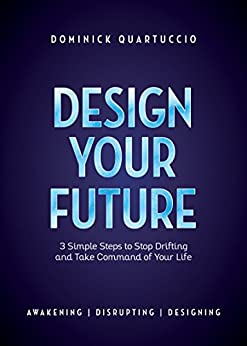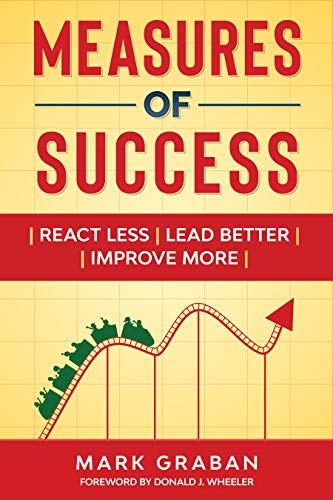In the fifth and final part of this series, we look at some examples of employee theft, and overall prevention measures. In part one we looked a cash handling methods, in part two we looked at credit card theft, in part three we looked look at best practices for preventing theft from inventory, and in part four we looked at employee time theft.

As we’ve talked a lot about during this series, there is an overriding concept that helps to protect against employee theft: Trust No One. As we mentioned in part one – thefts are almost always crimes of opportunity. The goal of this series, and of owners and managers, is to remove those opportunities wherever possible and to make it easy to find the culprit where removal of the opportunity is not possible. If your business does not have video cameras in place, you are at a serious disadvantage due to the protection they provide to employers, and also to employees. If you take nothing else away from this five-part series it is that video cameras with solve far more problems than they ever create.
Unfortunately, the number one culprit for serious theft from a business is a trusted manger. It should therefore be the responsibility of all managers to create systems that are robust, create a significant paper trail, and to welcome oversight.
Thefts occur for a number of reasons including to solve money issues and general opportunity. A significant number, however, particularly when it comes to managers, occur to get revenge on an employer or prove how clever the employee is to “beat the system.”
Even when thieves are not managers, in retrospect it is often found that they have flaunted their methods to co-workers or not taken basic precautions. These are employees who feel significantly undervalued and feel that they are “owed” what they are taking. What other excuse can there be for an employee who sells high specialized products on eBay under their own name?

image courtesy of Pixabay
Managers
Giving managers freedom to act of the behalf of the company, does not mean that processes should not be implemented to ensure that the freedom and power that they wield are not abused.
Whether a manager has a company credit card, or just has access to one, statements should not be received at the place of business but to the home of the owner, if possible, and religiously reconciled each month. Similar precautions should be taken with company checkbooks, and company bank accounts. Not giving a manager a company card; but making them use their own which they then have to submit receipts to get reimbursed, can seem like a solution to company credit card abuse. However, a manager using their own credit card only works as a theft prevention method if the expenses claim, that this will ultimately result in, is reconciled with the same care that would be taken with a company credit card statement.
Payroll reports should be inspected every time a payroll is ran. Any employees who are not recognized should be thoroughly investigated. Ghost employees, employees who don’t actually work but collect a paycheck which is then spilt with whoever prepares payroll, can bankrupt a business if not caught.
Accounts such as fuel cards which should also be monitored for abuse. Fuel cards in particular are easily abused as the transactions are often automated and happen offsite. Thankfully, fuel card vendors have a number of systems in place to help monitor and catch embezzlement. Unfortunately, it is often managers with little oversight that setup such systems.
Owners and managers must embrace transparency when it comes to theft prevention, not just pay lip service to it. It is in a manager’s own best interest to create robust systems that create double checks on their own work for their own protection if nothing else. General expense tracking should catch embezzlement, or certainly lead to further investigations but this only works if someone is looking.

image courtesy of Pixabay
Other Thefts
Stamps, or automated postage machines, are effectively cash. We rarely treat stamps with the same level of reverence and security as cash however. The employee who is running a side business on Ebay and offering free shipping courtesy of your business’s postage is not unheard of.
Cash tips often cause issues when certain employees have jobs that are considered “tip-worthy” and others are not. Tips given to one employee, to give to another, is just a recipe for disaster. If this happens in your business consider implementing a strict handling protocol, such as: the tip is placed in a sealed envelope, in front of the client, and deposited into a lock box to which only the tipped employee has access.
Access to the incoming mail can lead to corporate identity theft. Loan and credit card offers are routinely cold submitted to businesses through the mail. Just like with personal identity theft, it can be difficult to prove that a loan or credit card has not been taken out fraudulently in the name of the business. Corporate identity theft also has the added drawback, for the owner, that the amounts can be so much larger and unless you can prove embezzlement, the company will have to repay the loan. The sorting of mail, unless the business receives considerable volumes, should not be a low-level task. It should be left to the owner or a senior manager. Employees should not receive private mail at their place of employment. If private mail is received, employees should be aware that it may be opened.
Employees should not be able to change prices in your sales system. If it is not possible, or desirable to restrict this ability, a daily report should be ran to ensure that modifications of price have been done in line with company policy and not as a method of theft. Few clients check their receipts, and fewer still say something when they think something looks off.
Always take complaints from clients with regards to wrong change, forgotten change, or overcharging seriously and investigate thoroughly. If the employee can’t come up with reasonable explanation, you may very well have interrupted a theft.

image courtesy of Pixabay
Prosecuting Theft
Always terminate thieves!
Always prosecute thieves!
To an employer the penalties given out in most employee theft cases make it seem not worth the time or effort; however, unless a thief has already been through the process, to most employees being prosecuted carries significant weight. Nowhere is that weight felt more strongly than with your remaining employees. When controls are lack it is not uncommon to have multiple employees stealing at same time in different ways.
When terminating an employee for theft, try to get the police involved at the termination stage. It makes a significant impact on the employee concerned and sends a significant message to everyone else in the business. Of course, if you are going to do this you must have your facts laid out and they must be easy to follow. If the police can’t, or won’t, get involved at the termination stage you may have to go to a police station and report the theft in detail. Again, ensure that you have all your documentation, and facts straight; however, do be careful not to over do it. I once had a case of what I believed was a $1,000 embezzlement that took place over six months. The prosecution never went anywhere, I believe, because the stack of paperwork I presented to the detective was too overwhelming for the amount of the theft involved.
Different states have different amounts at which a theft stops being a misdemeanor and becomes a felony. This will have an impact on how the case is handled and sentence that the accused will ultimately receive if convicted. Always be prepared to go to court, and always make a victim impact statement if given an opportunity to. You cannot complain about being unhappy with the sentence a thief has received from a court if you are not prepared to help the prosecutor and the process.

image courtesy of Pixabay
Examples of Thefts
The following are examples of the type of thefts that I have either been involved with uncovering or have heard about from colleagues. Some are quite ingenious and some are just plain stupid.
1: A late night receptionist who used a reloadable visa gift card to give themselves refunds each night. They would batch out the credit card machine, run their refund, and then rebatch the credit card machine. The only way they were ultimately caught was that the visa card had been a gift from their employer and they had registered it online in case it got lost.
2: A cashier engaging an elderly client in significant conversation so they lose track that they have not received their change.
3: An employee changing prices of items in the sales software, but charging the client full price and pocketing the difference.
4: The super helpful employee who takes the trash out from all around the building, including the inventory storage room where they help themselves to some easily resalable items. The items are removed from the building with the rest of the trash and they then return in the evening after the building is locked up and retrieve the items from the trash. They were ultimately caught because they stole some items that were discontinued and so relatively rare. A search on eBay uncovered the items being sold under their own name. A look at their eBay history provided a history of everything they had stolen over a two-year period. In addition, their listings offered free shipping which explained the thefts of stamps.
5: The employee who discovers that the payroll app has a feature that allows them to clock-in from home before leaving for work and then clock out when they get home giving them an extra 30 minutes every day.
6: The employee with money troubles who intercepts the deposits after they have been placed on the business owner’s desk, taking a portion of the cash of the day and the deposit slip, and replacing it with a new deposit of their own making.
As mentioned before employee thefts are crimes of opportunities. Remove those opportunities and half the battle is won. Create a culture of transparency, and of checks and balances, and the other half will also be won. I mention to employees all the time; “Don’t put me in the position of where I may have to suspect you of something. Make it obvious that it can’t be you.”









